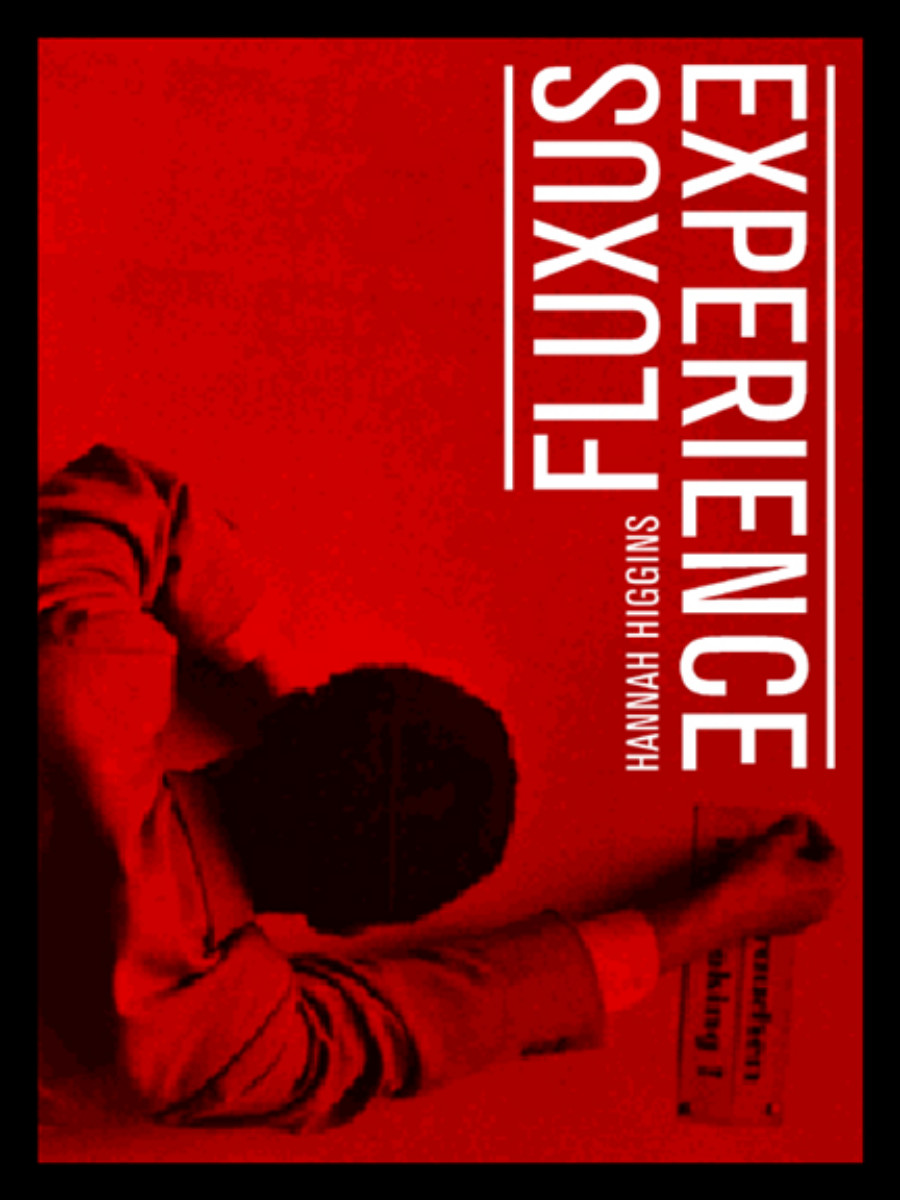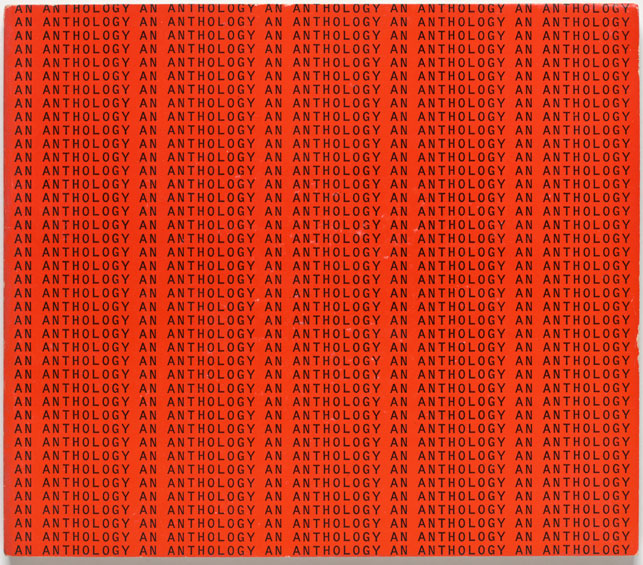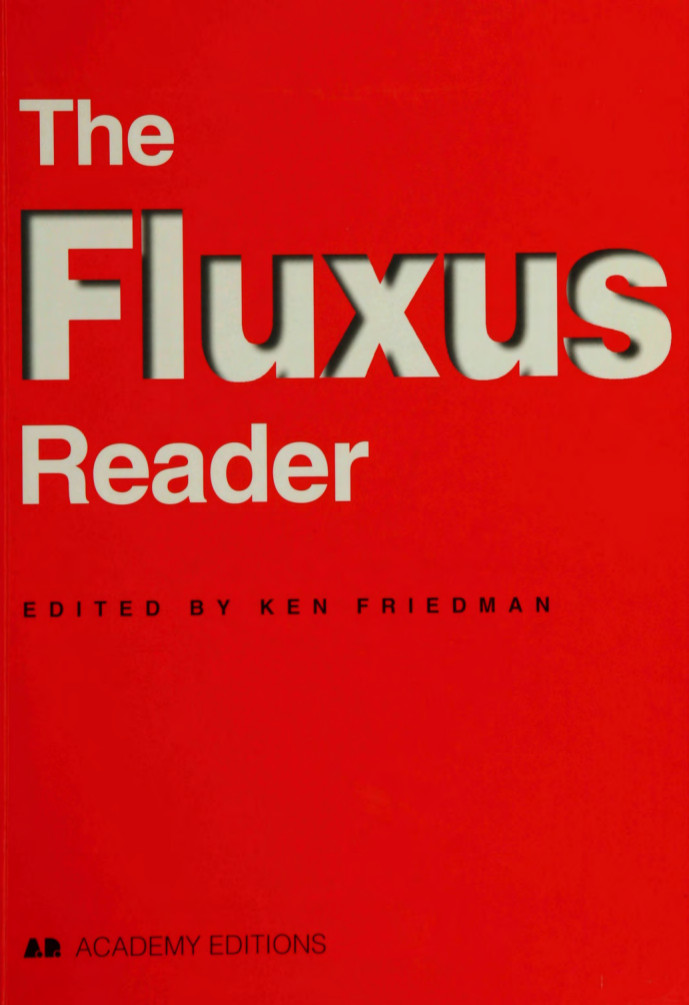Hannah Higgins: Fluxus Experience (2002)
Filed under book | Tags: · art, art criticism, art history, education, experimental film, fluxus, happening, intermedia, intermedia art, neo-dada, performance, performance art, pop art

“In this work, Hannah Higgins explores the influential art movement Fluxus. Daring, disparate, contentious—Fluxus artists worked with minimal and prosaic materials now familiar in post-World War II art. Higgins describes the experience of Fluxus for viewers, even experiences resembling sensory assaults, as affirming transactions between self and world.
Fluxus began in the 1950s with artists from around the world who favored no single style or medium but displayed an inclination to experiment. Two formats are unique to Fluxus: a type of performance art called the Event, and the Fluxkit multiple, a collection of everyday objects or inexpensive printed cards collected in a box that viewers explore privately. Higgins examines these two setups to bring to life the Fluxus experience, how it works, and how and why it’s important. She does so by moving out from the art itself in what she describes as a series of concentric circles: to the artists who create Fluxus, to the creative movements related to Fluxus (and critics’ and curators’ perceptions and reception of them), to the lessons of Fluxus art for pedagogy in general.
Although it was commonly associated with political and cultural activism in the 1960s, Fluxus struggled against being pigeonholed in these too-prescriptive and narrow terms. Higgins, the daughter of the Fluxus artists Alison Knowles and Dick Higgins, makes the most of her personal connection to the movement by sharing her firsthand experience, bringing an astounding immediacy to her writing and a palpable commitment to shedding light on what Fluxus is and why it matters.”
Publisher University of California Press, 2002
ISBN 0520228677, 9780520228672
259 pages
Reviews: Ken Friedman (Design Research, 2003), Jennie Klein (PAJ: A Journal of Performance and Art, 2004), Roy R. Behrens (Leonardo, 2004), Branislav Jakovljevic (TDR: The Drama Review, 2004), Ágnes Ivacs (Artpool, n.d.).
PDF (updated on 2012-7-18)
Comment (0)La Monte Young, Jackson Mac Law (eds.): An Anthology of Chance Operations (1963)
Filed under artist publishing | Tags: · art, avant-garde, conceptual art, fluxus, music, poetry

A source-book of early Fluxus classics. A collection of scores, poetry, dance constructions, and other avant-garde work. Includes Henry Flynt’s first essay on concept art.
When the poet Chester Anderson, publisher of Beatitude, exited New York for California in 1959, he asked La Monte Young to edit Beatitude East, composed from the performance scores Young had collected in Berkeley and New York. In this he was aided by Jackson Mac Low, who had attended Cage’s composition course at the New School for Social Research and worked at the Living Theater with Julian Beck and Judith Malina.
Mac Low and Young provided Maciunas with connections to “beat” ideology, encouraging him not only to present radical programming at AG Gallery, but to design An Anthology, and to organize the initial 1962 Fluxus Festival in Wiesbaden, Germany. All of this was contemporaneous.
Maciunas supplied the paper, design and some money for the publishing of An Anthology, according to Henry Flynt, and had it ready for printing by October 1961. It was finally published by Young and Mac Low in 1963 as:
AN ANTHOLOGY of chance operations concept art anti-art indeterminacy improvisation meaningless work natural disasters plans of action stories diagrams Music poetry essays dance constructions mathematics compositions, BY GEORGE BRECHT, CLAUS BREMER, EARLE BROWN, JOSEPH BYRD, JOHN CAGE, DAVID DEGENER, WALTER DE MARIA, HENRY FLYNT, YOKO ONO, DICK HIGGINS, TOSHI ICHIYANAGI, TERRY JENNINGS, DENNIS, DING DONG, RAY JOHNSON, JACKSON MAC LOW, RICHARD MAXFIELD, ROBERT MORRIS, SIMONE MORRIS, NAM JUNE PAIK, TERRY RILEY, DITER ROT, JAMES WARING, EMMETT WILLIAMS, CHRISTIAN WOLFF, LA MONTE YOUNG/LA MONTE YOUNG – EDITOR/GEORGE MACIUNAS – DESIGNER.
The first edition (it was reprinted in 1972 by Hundermark, Germany) contains 67 leaves and three inserts. It includes multicolored and onionskin paper, card stock and two envelopes. The text was printed in offset with a heavy paper cover, collated manually with a staple and perfect binding.
Self-published, New York, Spring 1963
Layout by George Maciunas
120 pages
PDF (36 MB, updated on 2012-7-9)
Comment (1)Ken Friedman (ed.): The Fluxus Reader (1998)
Filed under book | Tags: · 1950s, 1960s, aesthetics, art, avant-garde, fluxus

“Fluxus began in the 1950s as a loose, international community of artists, architects, composers and designers. By the 1960s, Fluxus has become a laboratory of ideas and an arena for artistic experimentation in Europe, Asia and the United States. Described as ‘the most radical and experimental art movement of the 1960s’, Fluxus challenged conventional thinking on art and culture for over four decades. It had a central role in the birth of such key contemporary art forms as concept art, installation, performance art, intermedia and video. Despite this influence, the scope and scale of this unique phenomenon have made it difficult to explain Fluxus in normative historical and critical terms. The Fluxus Reader offers the first comprehensive overview on this challenging and controversial group. It is written by leading scholars and experts from Europe and the United States.”
Publisher Academy Editions, UK, 1998
Creative Commons Attribution CC-BY 3.0 Unported licence
ISBN 0471978582, 9780471978589
309 pages
The version of the text provided for download here contains updates on the original 1998 edition.
via Joseph Nechvatal
Reviews: Elizabeth Beckman and Jonathan Applefield (Art J, 1999), Beáta Hock (Artpool, n.d.).
PDF (37 MB, updated on 2012-7-30)
PDF chapters

